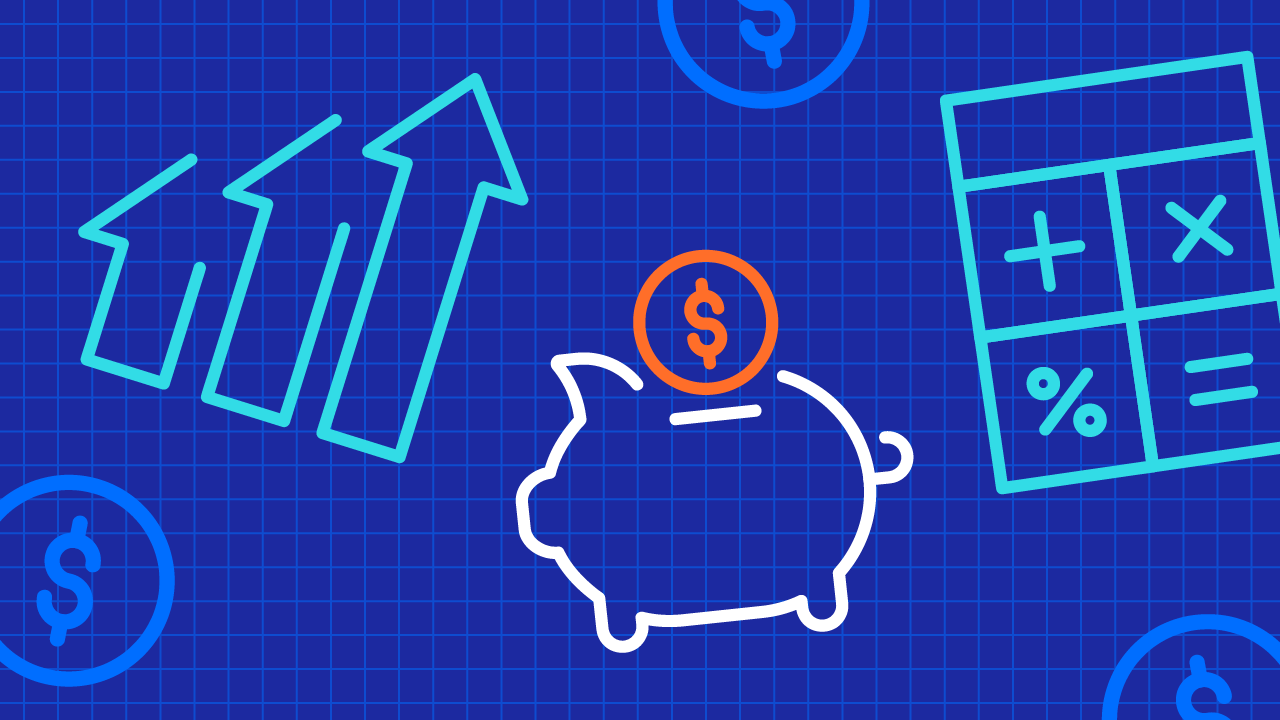In 1999, the directors of The Blair Witch Project hung “missing person” posters around the Sundance Film Festival to build buzz before the screening. Thanks to publicity stunts like these, the movie made $250 million at the global box office after being filmed for just $35,000. That’s the power of earned media – and that was before the days of social networks.
In today’s digital landscape, the benefits of earned media have multiplied, and it’s easier than ever to leverage it, if you know where to start. So what’s the definition of earned media? And how does it apply to your brand?
What Is Earned Media?
Earned media is the visibility your business “earns” from organic sources. It's often contrasted with paid media, which is a more traditional advertising strategy that involves making a financial investment in return for a guaranteed placement for your brand (like paid social media ads, billboards, podcast endorsements or banner ads on a website). It’s also different from owned media, which are the channels you completely control, like your website and blog, and shared media, which includes the posts you make from your social media accounts (but not organic mentions or shares from others – that’s earned media).
Earned media, by definition, isn’t created directly by your brand or paid for. You “earn” it through your reputation, word-of-mouth and public relations efforts. The biggest difference between earned media marketing and other strategies is that it comes from third-party sources, which gives it some unique benefits.
Top Benefits of Earned Media
From your local restaurant using guerrilla marketing to State Street Global Advisors’ sponsorship of the “Fearless Girl” statue on Wall Street, earned media benefits businesses large and small, in every industry.
Benefit 1: Credibility and Trust
Trust is more than a buzzword. In one recent survey, 71% of customers said they would buy less from a company that lost their trust, while 93% said they’re more likely to remain loyal to companies they trust. Customers trust earned media because it comes from third-party sources rather than directly from your brand – much like a recommendation from a friend.
Benefit 2: Increased Reach and Brand Awareness
Because customers find earned media more trustworthy, they’re willing to give it a second look, even if it’s from a brand they might not normally consider. Think Kate Middleton wearing her Burberry coat, which helped boost sales of the garment, or Taylor Swift name-dropping Olive Garden in a song. Both of these serve as examples of earned media and demonstrate its ability to help brands reach new, younger demographics.
Benefit 3: Customer Loyalty
The marketing landscape is oversaturated. Your customers know every trick in the book, and they don’t like being sold to. They increasingly care about sustainability and ethical practices, and they’re looking for a reason to buy from your brand. They’re looking for a connection. When you create that authentic connection through earned media, they may be more likely to return again and again – and recommend you to others.
Benefit 4: Cost Savings
Make no mistake: Earned media isn’t always free. It can take an earned media management team and specialized software, not to mention the perfect product placement, to get it right. But it’s still typically more affordable than paid media, which also requires all of those things, plus an up-front advertising investment. That ability to foster real, positive connections with customers without a high price tag is one of the biggest benefits of earned media.
What Are Examples of Earned Media?
Earned media in digital marketing is everywhere. If you’ve ever read a product review or re-tweeted a funny Denny’s post, you’ve participated in it. Here are the most common examples.
Press Coverage
Press coverage today includes everything from a feature article in a national newspaper to a discussion of your latest product release on the news to a quick mention from a niche blogger. The best ways to get press coverage, however, remain tried and true: Releasing regular press releases to targeted media outlets about your brand’s noteworthy events and developing relationships with bloggers and journalists.
Social Media Mentions
Any time someone organically mentions your brand on social media, that counts as earned media. The good news is that this is one of the easiest earned media examples to leverage. The bad news is that the brand exposure could be negative, as well as positive. You’ll need a good social media management solution to monitor trends and respond to them quickly. One proven way to earn social media mentions is to consistently publish high-quality thought leadership blog posts and share that content across all of your social media channels.
Influencer Partnerships
Influencer partnerships are usually paid, but they’re still considered a good example of earned media. To make the most of these influencer marketing partnerships, you’ll need to understand who your target audience follows on social media, then build a relationship with them. You might send them a sample or mention them on your own social channels. When they share your brand in a positive light, that’s earned media.
Reviews and Testimonials
Back in the mid-2000s, Yelp put business reviews on the map. Today, review sites proliferate, from the all-powerful Google to product-specific sites like Capterra and G2. And reviews don’t have to be written: The “unboxing” video trend put this type of earned media at the forefront. Like social media mentions, reviews are a double-edged sword. You’ll need to carefully manage your strategy to ensure that positive reviews come out on top.
Leveraging Earned Media in Marketing
With all those benefits, it’s no surprise everyone seems to be getting in on the earned media game. To maximize your outcomes, you’ll want to have the right strategy in place.
Step 1: Set Goals
The first step for any marketing or public relations program is to determine what you want to achieve. After all, how else will you know if your campaigns are successful? Your goals will depend on your product and the goals of your brand, but might include boosting overall awareness, reaching a new demographic, increasing positive reviews of a product and even improving your search engine rankings.
Step 2: Build Your Earned Media Strategy
Earned media doesn’t just happen – you have to earn it. Once you’ve defined your goals, you can define who you need to reach in order to make those goals happen. What do they think of your brand or product currently, and what do you want them to think? From there, determine the best way to reach them. How do they consume media? Where do they work, shop and live? What do they care about? This is also when you’ll identify any influencers you want to reach out to.
Step 3: Tell Your Story
While it’s ultimately third parties that provide your earned media, you can start the conversation. Posting on social media and publishing press releases regularly can encourage those third parties to pick up (or re-tweet) your story. Contacting influencers, journalists, bloggers, industry experts and consumer ratings websites can get them to give you favorable coverage. Offering incentives can help you get positive customer reviews. Creating unique, compelling and entertaining content remains the golden ticket to positive earned media.
Step 4: Promote and Engage
The definition of earned media doesn’t end once your content is out in the world. Creating content marketing campaigns that promote your brand through every available channel and continuing the conversation with your customers on social media are essential pieces of the puzzle. Thank customers for positive feedback and let them know you care about negative feedback, too. You don’t have to roast your rivals on Twitter, like Wendy’s (although it works for them). Simply engage with your customers where they are to keep the conversation going.
Step 5: Be Patient
One of the most common questions marketers ask is, “How long does it take to see results from earned media efforts?” And the answer is: It varies, but establishing your credibility and creating real connections with customers takes time. If you’re trying to enter a whole new market or reach a demographic that’s never heard of you, it might take months or more (unless you can get Taylor Swift to mention you in a song, that is). Consistently deliver engaging content to the right audience, be patient and you’ll start seeing positive results.
How to Measure the Effectiveness of Earned Media
Historically, one of the biggest struggles with earned media is proving its effect on your brand’s bottom line. Luckily, the days of advertising value equivalency (AVE) are coming to an end. New earned media analysis technology takes into account not only outputs, but also outcomes and business results.
Outputs
Outputs are the traditional earned media measurement, and they’re still important. This metric measures the impact of your campaign on media channels and includes:
- Reach and impressions: This is the number of people who have been exposed to your content. You can track impressions through many different analytics platforms, and from there, analyze your audience’s gender, age, education level and more to ensure you’re reaching the people you want.
- Share of voice: This metric compares your brand’s share of the media landscape to that of your competitors. You can see how your brand, products or messages measure up across every channel, not just social media.
Outcomes
Outcomes measure the actual impact your earned media has on your audience: Do they care about your message?
- Engagement: When a customer sees your message, that’s an impression. When they click, like, share or comment on it, that’s engagement. These metrics tell you how interested they are – and that tells you what to keep doing, and what to stop doing.
- Brand sentiment: Engagement isn’t always positive. Monitoring brand mentions and sentiment helps you determine not only whether people are talking about you, but how they feel. And tools like Cision’s upcoming Stance technology use artificial intelligence to give you an even deeper understanding of the context of those conversations.
Business Results
Finally, brand measurement and analytics connects earned media back to the ultimate metric: the impact on your business’s bottom line.
- Conversions: Whether a conversion means making a purchase, signing up for a demo or joining a loyalty program, earned media measurement can help you attribute these actions to your campaigns. Some technology can even credit earned media for content downloads, page visits and more.
- Return on investment (ROI): In marketing, ROI is just as important as conversions when it comes to showing your impact. Earned media typically has a high ROI, and the latest tech will let you prove it.
It’s time for brands to consider investing in earned media as much as paid, and with the latest advances in technology, they can. Cision offers tools that can help you prove the benefits of earned media by directly attributing key customer actions to your coverage and measuring its impact on lead generation and even sales.
To find out how Cision can help you apply these learnings to your own strategy and enhance your earned media efforts, speak to an expert.







